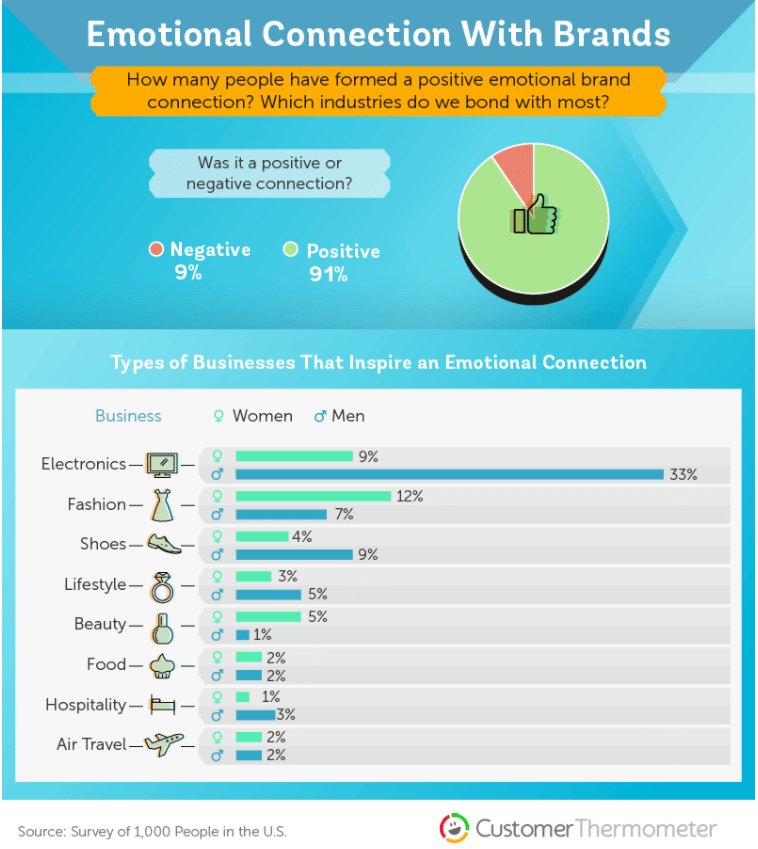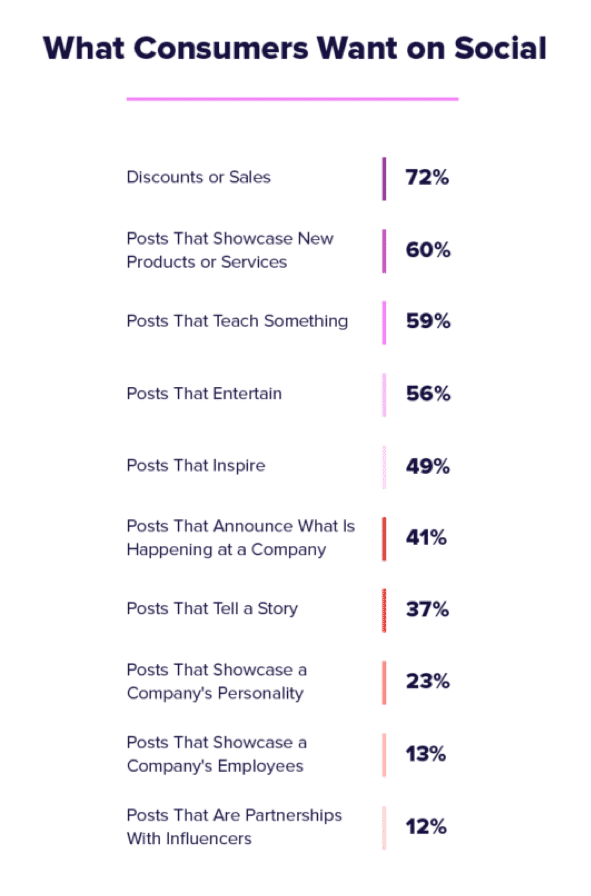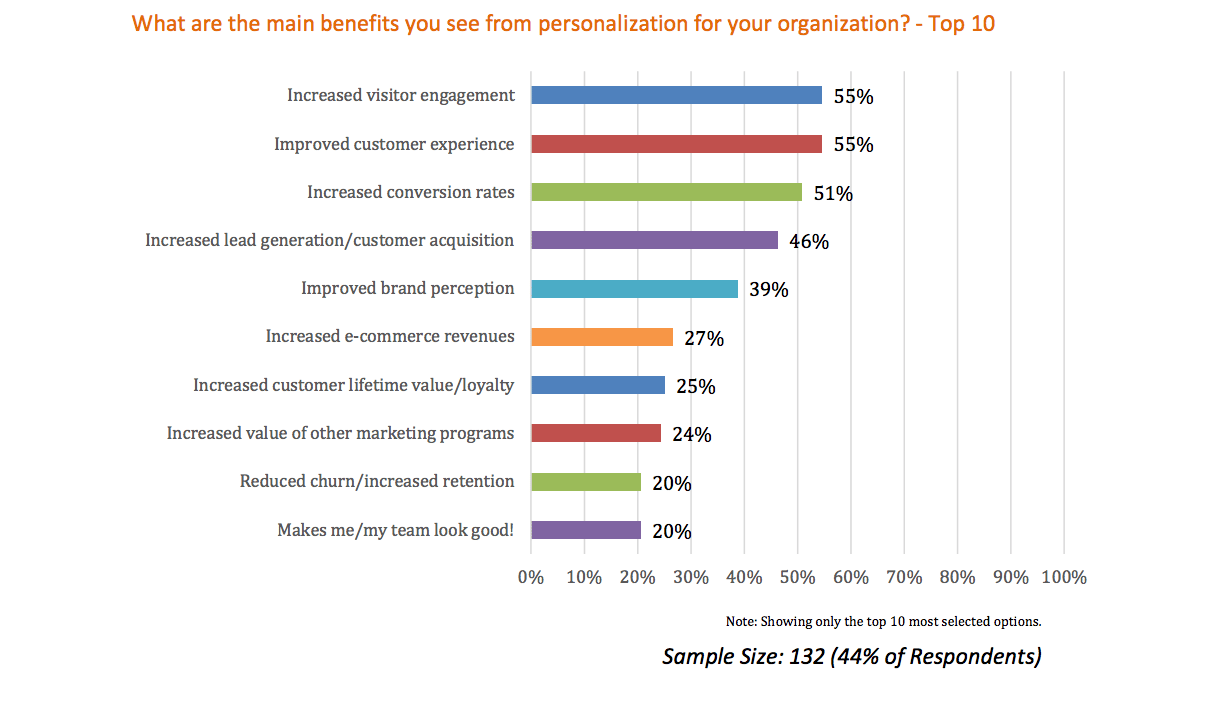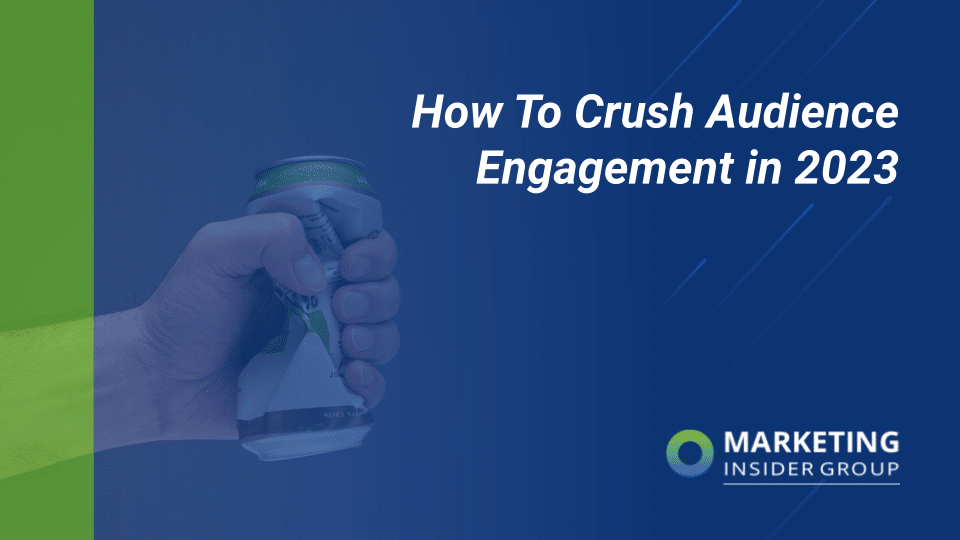
The Virtuous Cycle of How Marketing Engagement Increases Leads
Engagement rates are thrown around in the business world as important metrics that need to grow and increase. But what exactly is customer engagement and why is it so important?
Typically, customer engagement is associated with online interactions, particularly on social media.
Businesses with highly engaged audiences receive lots of likes, comments, and shares on their social posts, and their brand name is frequently mentioned online.
There are plenty of reasons that customer engagement is significant, but arguably the most important of them is that higher engagement rates are directly linked to an increase in sales.
According to the B2B Benchmark Report from CMI, 72% of businesses that increase their engagement through various marketing strategies also saw similar growth in sales leads.
In B2C and eCommerce as well, brands with higher customer engagement rates report longer customer lifetime values and more direct referrals.
Engagement is often a result of an emotional connection that is established between the brand and its customers. When customers feel like a brand really cares about them, they trust the business more.

Quick Takeaways:
- Engagement is a way for businesses to gauge how connected their audience is with their brand and how often they are interacting with its content.
- It’s difficult to translate connection and interaction metrics into KPIs or tie them to revenue or ROI.
- Know how to personalize your content for better engagement and more conversions.
How it Works: Engagement Takes the Pushiness Out of Sales
If you have to beg for your customer’s attention, and then some more to get them to buy, chances are that your audience is not highly engaged. An engaged customer is going to convert on their own terms and they won’t need much convincing. After all, they are already aware of your brand and your product and trust your business. This allows your sales team to gently follow up rather than hounding customers with marketing content.
This in turn creates a more positive brand perception because of the long-term relationships that are built with customers who are more loyal – and spend more, too.
Best way to sell something – don't sell anything. Earn the awareness, respect, & trust of those who might buy.
— Rand Fishkin (follow @randderuiter on Threads) (@randfish) February 4, 2015
But engagement needs to happen naturally in order for it to be effective.
One of the quickest ways to turn away a potential customer is by being overly pushy or salesy. Think of the stereotypical car salesman. He tries to chat up a customer and build rapport by asking them about the kind of car they’re looking for, their budget, how many kids they have, and so on. However, the customer knows that these are just leading questions that the salesman is using to hopefully boost his commission once they decide to buy. This often makes the customers feel very uncomfortable and they will try to back out as soon as they can because they don’t like the pressure that is being placed on them to make a purchase.
So, what is the right way to build engagement with your audience that is genuine and effective?
Build Engagement Through Content
There are types of content that are more engaging than others. According to Sprout Social’s research, customers prefer content that teaches them about the brand or products. They also favor visual content like images and videos over text-heavy content like blog posts. Customers want to see content that promotes sales and discounts or that focuses on new products, teaches them new information, or entertains and inspires them.

It is clear that storytelling and education also play a crucial role here. B2B brands can combine these two in a great way – in the form of case studies! Case studies are particularly influential on B2B buyers who’re looking for concrete proof that their investment will pay off. Focus on specific ways that your brand has benefited various clients so that your customer can find appropriate points of connection related to their own situations. Don’t forget to showcase these on your website.

In fact, this is one of the only ways to get many customers to pay any attention to your content. Basic personalization like mentioning a customer by name in an email is not going to cut it here. One report claims that 72% of consumers will only engage with a brand’s content if it was customized specifically for them.
When it comes to personalization, it is best to focus on the features that directly benefit customers and encourage them to make a purchase decision. Offering personalized product recommendations is highly effective for instance – in this case brands like Amazon and Netflix do it best with complex algorithms that do so for every user.
Transition Engagement into Lead Generation
Once you find that you are able to connect with customers through these engagement strategies, it is important to cultivate the relationships into leads and conversions. While this may occur naturally as your brand attracts new customers, your sales and marketing team also needs to be proactive.
Personalization is important here as well; remember, you don’t want to hound your customers with pushy messaging. Instead, it is best to use an intelligent CRM system that tracks customer interactions and helps your marketing and sales team to create a plan to follow up with potential leads.
Another great way to transition engagement into lead generation is by connecting with individuals directly, particularly through social media. Respond to comments and thank customers for their support of your brand. If a person mentions your brand or shares your post, it is perfectly acceptable to send them a thank you through a direct message. This can help to foster a conversation and build those emotional connections that can turn a lead into a conversion.
@BryanMHaines Here to help. If you need anything or have questions, email [email protected]. Also, some features: https://t.co/8SfFRWXowq
— Contextly (@contextly) November 24, 2015
Keep the Wheel Spinning
Engagement and lead generation really go hand-in-hand; it is much harder to find customers and convert them if they are not highly engaged with your brand. By turning your marketing focus to building partnerships with your customers, you will find it much easier to generate new leads and turn them into paying, loyal customers.
You can keep the engagement-lead gen wheel spinning by:
- Creating smart and interactive content that aims to get a reaction from your audience
- Tracking the quality of engagement that you have on various channels and scoring every lead
- Nurturing relationships further with more engagement to turn MQLs into SQLs
Do you factor engagement into your lead generation model? How is it working for you? Care to share in the comments?
If you are ready to get more traffic to your site with quality content that’s published consistently, check out our Content Builder Service. Set up a quick consultation, and I’ll send you a free PDF version of my books. Get started today–and generate more traffic and leads for your business.






